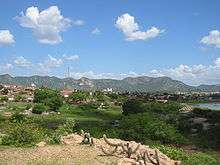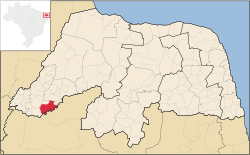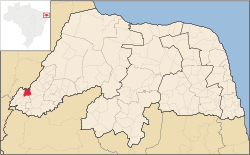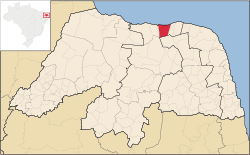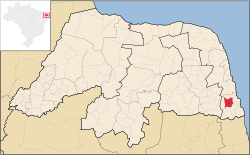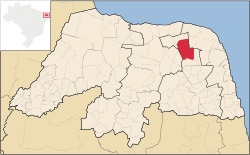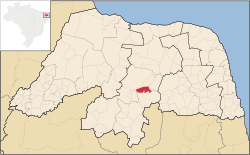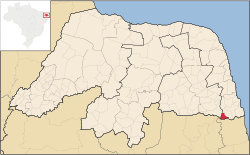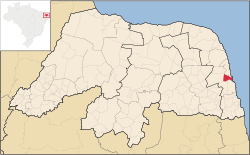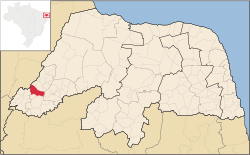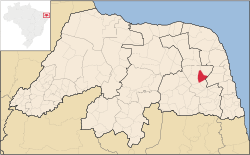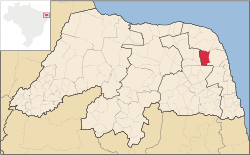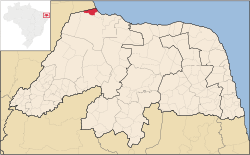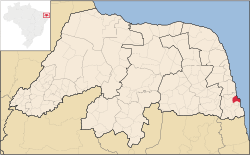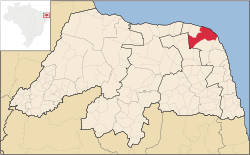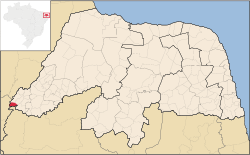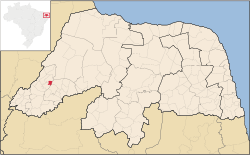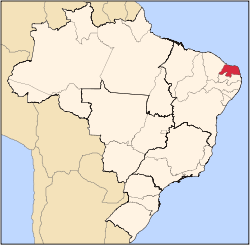List of municipalities in Rio Grande do Norte

Rio Grande do Norte (English: Great River of the North)[1] is a state located in the Northeast Region of Brazil. According to the 2010 Census conducted by the Brazilian Institute of Geography and Statistics (IBGE), Rio Grande do Norte has a population of 3,168,133 inhabitants over 52,797 square kilometres (20,385 sq mi), which makes it the 16th largest state by population and the 22nd largest by area, out of 26 states.[2][3][4][5] It is home to cities such as Natal, Mossoró, and São Gonçalo do Amarante.
The land that became Rio Grande do Norte was a donatário to João de Barros, the factor of the House of India and Mina, from John III of Portugal in 1535;[6] prior to that, the Portuguese Crown owned the land.[7] The French, who trafficked Brazil wood in the area, had a foothold on the land until the Portuguese expelled them in 1598.[6] The Dutch took the land in 1634 as a part of Dutch Brazil and reigned until 1654, when they were defeated by the Portuguese.[8] In 1701, Rio Grande do Norte joined the Captaincy of Pernambuco, and became a province in 1822 and a state of Brazil in 1889.[6] In the DK Eyewitness Travel Guide, Alex Robinson and Christopher Pickard describe tourism as a "real growth industry" in the state.[9]
Rio Grande do Norte is divided into 167 municipalities, which are grouped into four mesoregions and 23 microregions. Of the 167 municipalities, Natal has the highest population, with 803,811 inhabitants, while Viçosa, with 1,618 inhabitants, has the lowest. The largest municipality by area is Mossoró, with an area of 2,110 square kilometres (815 sq mi); the smallest is Senador Georgino Avelino, named after the former Senator and Rio Grande do Norte Governor José Georgino Avelino,[10] which covers an area of 26 square kilometres (10 sq mi).
Municipalities
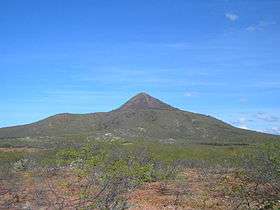

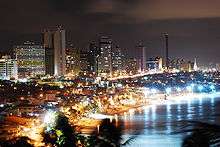
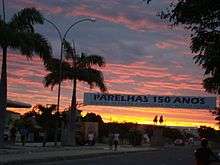
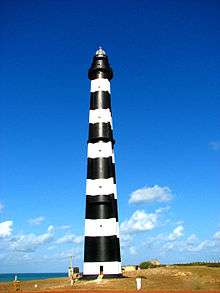
See also
References
- ↑ Smith, Benjamin Eli (1918). The Century cyclopedia of names: a pronouncing and etymological dictionary of names in geography, biography, mythology, history, ethnology, art, archaeology, fiction, etc., etc. 6. The Century Company. p. 857.
- ↑ "Censo 2010: população do Brasil é de 190.732.694 pessoas" [Census 2010: Brazil's population is 190,732,694 people] (in Portuguese). Brazilian Institute of Geography and Statistics. Archived from the original on January 18, 2012. Retrieved November 26, 2011.
- ↑ "Área Territorial Oficial" [Official Territorial Area] (in Portuguese). Brazilian Institute of Geography and Statistics. Retrieved November 26, 2011.
- 1 2 "Censo 2010– Rio Grande do Norte" [Census 2010– Rio Grande do Norte] (in Portuguese). Brazilian Institute of Geography and Statistics. November 29, 2010. Archived from the original (PDF) on May 21, 2011. Retrieved November 26, 2011.
- 1 2 3 4 "Divisão Territorial do Brasil" [Territorial Divisions of Brazil] (Zip file) (in Portuguese). Brazilian Institute of Geography and Statistics. July 1, 2008. Retrieved November 26, 2011.
- 1 2 3 "História" [History] (in Portuguese). State Government of Rio Grande do Norte. Archived from the original on March 22, 2012. Retrieved March 10, 2012.
- ↑ Olson, James Stuart; Shadle, Robert (1991). Historical Dictionary of European Imperialism. Greenwood Publishing Group. p. 527. ISBN 978-0-313-26257-9.
- ↑ "Paraíba & Rio Grande do Norte" (PDF). Lonely Planet. BBC Worldwide. Archived from the original (PDF) on October 2, 2012. Retrieved March 10, 2012.
- ↑ Robinson, Alex; Pickard, Christopher (2010). DK Eyewitness Travel Guide: Brazil. Penguin Books. p. 227. ISBN 978-0-7566-8337-5.
- ↑ "Senador Georgino Avelino" (in Portuguese). Portal Oficial De Turismo do Rio Grande do Norte. Retrieved March 6, 2015.
- ↑ "São Miguel do Gostoso entra na onda do kitesurf" [São Miguel do Gostoso enters the wave of the kite]. Paraná Online (in Portuguese). August 23, 2008. Archived from the original on March 25, 2012. Retrieved March 16, 2012.
- ↑ "Rio Grande do Norte" (in Portuguese). Empresa Brasileira de Pesquisa Agropecuária. Retrieved February 18, 2012.
